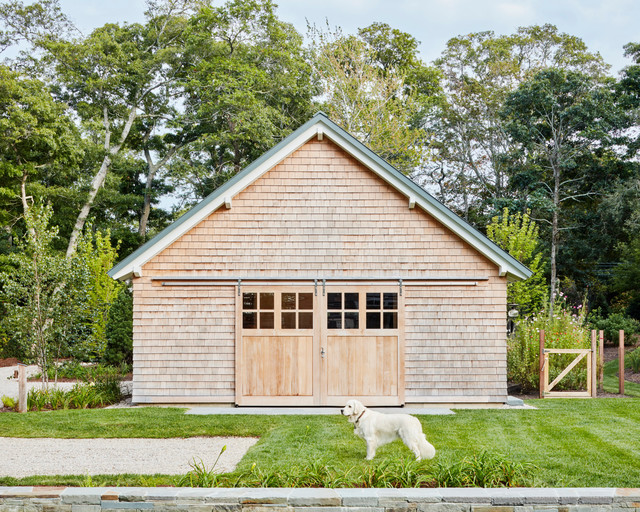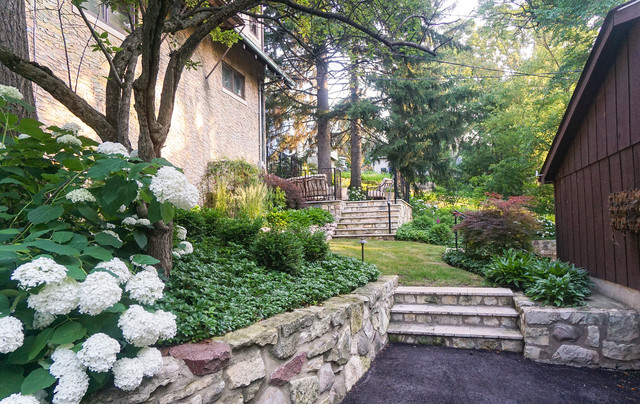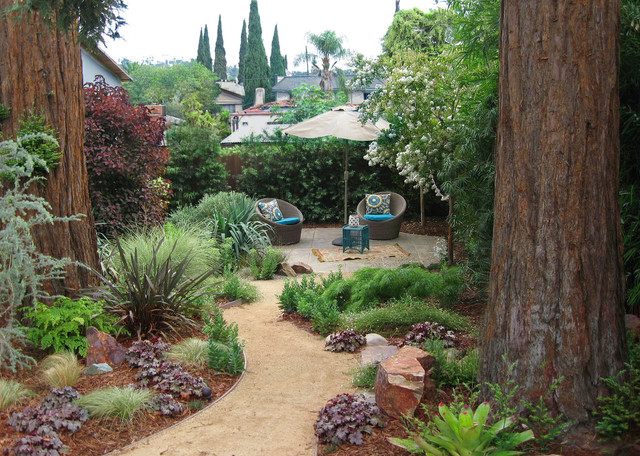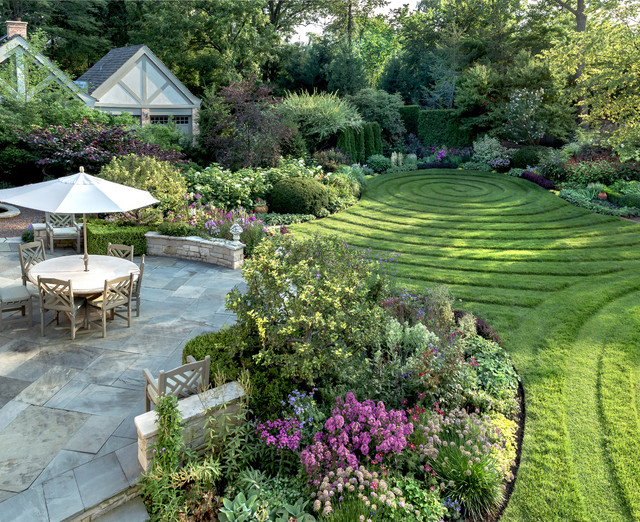10 Steps to Help You Get Ready for Landscape Construction
1. Clean Up
Before demolition starts, look around and see if there are things in your yard that you know you won’t use after the renovation. If they’re still in good shape, you can recycle, donate or sell them. Nurseries usually will take back larger nursery pots.
If you’re feeling ambitious — and you’re an experienced gardener — you also can dig up healthy plants that won’t be part of the new design and offer them to other gardeners.
2. Pack Things Up
Place things you will be keeping, especially if they have personal value, in a safe place for the duration of the work. Move potted plants as well so they won’t be damaged. You’ll feel less stressed as the crew works, and the team won’t have to worry about damaging your things.
If you don’t have a storage spot, or if you have larger items that aren’t easy to set aside, be sure to let the crew know and they can take extra care. “We can move items from place to place as we work,” says Aaron Gorski of Landed, a landscape design, build and maintenance firm in Alexandria, Virginia.
Place things you will be keeping, especially if they have personal value, in a safe place for the duration of the work. Move potted plants as well so they won’t be damaged. You’ll feel less stressed as the crew works, and the team won’t have to worry about damaging your things.
If you don’t have a storage spot, or if you have larger items that aren’t easy to set aside, be sure to let the crew know and they can take extra care. “We can move items from place to place as we work,” says Aaron Gorski of Landed, a landscape design, build and maintenance firm in Alexandria, Virginia.
3. Plan for Safety
Scott Lucchetti of landscape contracting firm CB Conlin Landscapes in Naperville, Illinois, says your yard, while still a private residence, also will be a construction site. “Safety and health protocols will need to be followed, and your yard [will not be available] for every use,” he says. Think about your everyday life and how this will affect you, then plan to work around the limitations. It may be as simple as using a side entrance or taking trips to nearby parks so children can play.
Pets and construction sites aren’t a good mix either. No matter how careful a crew is, there still will be small objects that dogs, cats and other pets can get into. They also can unintentionally damage ongoing work. Decide ahead of time how to keep animals amid the ongoing work.
Scott Lucchetti of landscape contracting firm CB Conlin Landscapes in Naperville, Illinois, says your yard, while still a private residence, also will be a construction site. “Safety and health protocols will need to be followed, and your yard [will not be available] for every use,” he says. Think about your everyday life and how this will affect you, then plan to work around the limitations. It may be as simple as using a side entrance or taking trips to nearby parks so children can play.
Pets and construction sites aren’t a good mix either. No matter how careful a crew is, there still will be small objects that dogs, cats and other pets can get into. They also can unintentionally damage ongoing work. Decide ahead of time how to keep animals amid the ongoing work.
5. Point Out the Unexpected
Crew members will be able to access the main plumbing, electrical and sewage lines, but let them know about anything you or others have added. This might include phone lines, electrical lines, additional plumbing for water or natural gas, cable lines and other elements. If you know where these are, go ahead and mark them. If not, simply let the contractor know. “A heads-up lets us know about where things are, especially those in the ground that we can’t see,” Gorski says.
Crew members will be able to access the main plumbing, electrical and sewage lines, but let them know about anything you or others have added. This might include phone lines, electrical lines, additional plumbing for water or natural gas, cable lines and other elements. If you know where these are, go ahead and mark them. If not, simply let the contractor know. “A heads-up lets us know about where things are, especially those in the ground that we can’t see,” Gorski says.
6. Be Thoughtful About Sustainability
Landscape designer Todd Haiman of New York City says that every landscape project has the potential to address wider environmental issues for the better. Ask your crew about sustainable practices, from recycling materials to incorporating plant species that will work well for your climate. “It is incumbent upon landscape designers to look for opportunities to introduce beneficial plant species and sustainability to any new landscape project,” he says.
Landscape designer Todd Haiman of New York City says that every landscape project has the potential to address wider environmental issues for the better. Ask your crew about sustainable practices, from recycling materials to incorporating plant species that will work well for your climate. “It is incumbent upon landscape designers to look for opportunities to introduce beneficial plant species and sustainability to any new landscape project,” he says.
7. Plan a Kickoff Meeting and Have a Point Person
Most contractors will have a preliminary meeting with you to go over the plan, but speak up if that doesn’t get scheduled. “I use the first meeting to stake out the layout and review the scope of work to make sure everyone is on the same page,” Lucchetti says. “It’s critical to begin the relationship with complete transparency and to understand everyone’s expectations.”
Get the name and phone number of the person to contact if you have questions. That person can keep you informed of how things are proceeding and any problems that are cropping up. “Updates should be provided regarding who will be on-site each day, when they’ll be there and why,” Lucchetti says.
Most contractors will have a preliminary meeting with you to go over the plan, but speak up if that doesn’t get scheduled. “I use the first meeting to stake out the layout and review the scope of work to make sure everyone is on the same page,” Lucchetti says. “It’s critical to begin the relationship with complete transparency and to understand everyone’s expectations.”
Get the name and phone number of the person to contact if you have questions. That person can keep you informed of how things are proceeding and any problems that are cropping up. “Updates should be provided regarding who will be on-site each day, when they’ll be there and why,” Lucchetti says.
8. Understand the Timeline
A landscape takes time to install, and much of the work might not be readily visible at first. The first steps include getting permits and approval, which your contractor will handle. Other items might need to be assessed as well. “Construction of large elements such as pergolas and shade structures will require an engineer,” Haiman says. He adds that the team also will need to assess the structural integrity of existing elements and issues such as drainage and waterproofing.
A landscape takes time to install, and much of the work might not be readily visible at first. The first steps include getting permits and approval, which your contractor will handle. Other items might need to be assessed as well. “Construction of large elements such as pergolas and shade structures will require an engineer,” Haiman says. He adds that the team also will need to assess the structural integrity of existing elements and issues such as drainage and waterproofing.
Once demolition is done, there is a general order of installation. Footings and foundations for structural elements are among the first projects, along with excavation for utilities. This will be followed by adding the hardscape, including structures, paths and pavings. If you’re adding an outdoor kitchen, a fireplace or a permanent fire pit, these also will be part of this step, as will adding a pool or installing features such as overhead lights or fans.
When the hardscape is complete, it’s time for the plants. Garden beds will be created, plants will be put in and details such as low-voltage lighting, drip systems and mulch will be added. Also in this step, the lawn area will be graded, drainage issues will be resolved and sprinkler systems will be installed. The landscape will get a final cleaning, and sod will be installed, Lucchetti adds.
When the hardscape is complete, it’s time for the plants. Garden beds will be created, plants will be put in and details such as low-voltage lighting, drip systems and mulch will be added. Also in this step, the lawn area will be graded, drainage issues will be resolved and sprinkler systems will be installed. The landscape will get a final cleaning, and sod will be installed, Lucchetti adds.
9. Factor In Delays
Every contractor wants to stick to the promised schedule, but delays can happen. Weather is always a factor, and bad weather can cause delays. Inspections might take longer than expected too, especially as landscaping projects are becoming increasingly popular.
Another issue might be getting materials. “Economists expect [high] worldwide supply chain demands until 2023, so this should be taken into consideration,” Haiman says.
Additional project delays to plan for include subcontractor schedule conflicts and unforseen preexisting conditions that need to be resolved before the project can continue. “The majority of medium to large projects will inevitably contain some unforeseen items,” Lucchetti says. Any changes, no matter the reason, probably will result in some delays, but all of our experts agree that these should be spelled out ahead of time in the contract.
Every contractor wants to stick to the promised schedule, but delays can happen. Weather is always a factor, and bad weather can cause delays. Inspections might take longer than expected too, especially as landscaping projects are becoming increasingly popular.
Another issue might be getting materials. “Economists expect [high] worldwide supply chain demands until 2023, so this should be taken into consideration,” Haiman says.
Additional project delays to plan for include subcontractor schedule conflicts and unforseen preexisting conditions that need to be resolved before the project can continue. “The majority of medium to large projects will inevitably contain some unforeseen items,” Lucchetti says. Any changes, no matter the reason, probably will result in some delays, but all of our experts agree that these should be spelled out ahead of time in the contract.
10. Get a Maintenance Plan
Congratulations! You’ve survived the mess of landscape construction and are ready to enjoy your new yard. Before you sign off, however, your contractor should perform a final inspection and then you should do a final walk-through.
You also should ask what to expect going forward. Lucchetti says that your contractor should provide you with an aftercare plan for your landscaping, including both the plantings and hardscape. Haiman adds that a landscape isn’t necessarily ever finished. “In order to ensure long-term viability, you should expect monthly and seasonal maintenance, especially for winter preparation,” he says.
With all that in mind, it’s time to enjoy your new yard.
Congratulations! You’ve survived the mess of landscape construction and are ready to enjoy your new yard. Before you sign off, however, your contractor should perform a final inspection and then you should do a final walk-through.
You also should ask what to expect going forward. Lucchetti says that your contractor should provide you with an aftercare plan for your landscaping, including both the plantings and hardscape. Haiman adds that a landscape isn’t necessarily ever finished. “In order to ensure long-term viability, you should expect monthly and seasonal maintenance, especially for winter preparation,” he says.
With all that in mind, it’s time to enjoy your new yard.










Comments
Post a Comment